Applied Economics
Applied economics is the application of economic theories and principles to real-world situations and serves as the guiding force for decision-making processes in areas such as business, public policy, and daily life.
What is Applied Economics?
Applied Economics studies economic theories when applied to specific real-world scenarios or situations. There are two separate areas of distinction in the field of study and economics research. The first area is "core," and the second area is "applied."
According to a well-known saying, politics is the "art of the possible." However, when it is being expressed differently, politics is the art of governance; it is about how we structure and categorize our social life.
It can be applied at two levels:
- Micro-Level
- Macro-Level
Every possible application at the micro-level aims to use theoretical economics to solve problems at the independent level. The macro-level is utilized at a wide level (city/state/national) to work on various issues and bring more competency into the current work practices.
This particular branch of economics is not confined to a fixed principle or theory. Instead, the basics of the economy are used as a setting stone. Therefore it is difficult to set down any formula to explain this subject.
Business leaders and managers learn from the lessons to avoid potential damage and make strong decisions. For example, even daily consumers can better understand the prices they are paying at a grocery store by explaining why certain prices rise and fall.
The purpose is to improve the quality of practice in business, policies of public, and daily regular life by thinking about costs, economic benefits, incentives, and human basics.
Key Takeaways
- Applied economics involves the practical application of economic theories to real-world situations and scenarios, guiding decision-making in various sectors, including business, public policy, and daily life.
- Applied economics operates at both micro and macro levels, addressing independent issues with theoretical economics at a micro-level and influencing policies and practices at a broader scale on the macro-level.
- It serves as a valuable tool for decision-makers in business, public policy, and personal finance by considering costs, benefits, incentives, and human behavior to improve the quality of practice.
- Applied economics, seen in examples like opportunity cost, healthcare, and law, brings real-world impact by offering insights for better decisions, policies, and understanding economic behaviors.
Understanding Applied Economics
Applied economics utilizes insights from economic theory and research to make informed decisions and address real-world situations or scenarios.
It is a popular tool in business planning, public policy analysis, and evaluation. The theories allow us to test and formulate hypotheses. For example, it can help us understand the prices we pay, how delivery works, and why things may go on sale.
Note
Individuals can also benefit from applying economic thinking and insights to personal and financial decisions. It is the tool to help in choosing the best means to meet ends when various resources are limited.
The mainstream view generally consists of the following:
- First, label the variables as core-specific.
- Deliver numerical impressions.
- Clarifying real-life situations or scenarios.
- Finally, conclusions are drawn depending on the structure.
Using this branch of economics first involves exploring economic theories and laws to develop queries about a real-life circumstance, situation, or scenario and then concurring some data resources and other reference forms to form a plausible answer to the question.
For example, suppose a consumer aspires to possess a high-end luxury item but has a short supply of financial resources. In that case, a thorough check of the cost and the long-term impact of this particular purchase on the assets can be compared to the expected outcome of the item.
The idea is to establish a hypothetical outcome based on the specific real-world circumstances, situations, or scenarios drawn from the known implications of general economic laws and theories.
Key Economic Concepts
At the most basic level, economics attempts to explain how and why consumers make their economic choices. Four key economic concepts can explain many decisions that people make, which are listed below:
1. Opportunity Cost
Opportunity cost is about understanding the value of the next best alternative when making decisions. It also guides practitioners in making informed choices by weighing trade-offs in resource allocation, be it in investment, or policy decisions.
For example, a government allocating funds to build a new hospital must consider the opportunity cost—what other beneficial projects or services could be funded with the same resources, and what would be foregone by choosing the hospital project.
2. Supply and Demand
In a market system, the forces of supply and demand play a pivotal role. Take the example of beer: when the demand for beer is high, driven by consumer preferences, its price rises. This shift makes brewing more profitable than using wheat for flour.
Theoretically, this profit incentive prompts more individuals to enter the beer-making business. Over subsequent cycles, an ample supply of beer saturates the market, causing its price to decline.
3. Costs and Benefits
The concept of costs and benefits is associated with the theory of rational choice (and rational expectations) based on economics. It is also applied to other decisions unrelated to financial and economic transactions.
For example, if demand for beer is high, then the breweries will hire more employees for beer production, but it can only be done when the price of beer and the amount sold justifies the extra added costs of their wages and the materials needed to brew more beer.
4. Incentives
Economic incentives explain how the operation of supply and demand encourages the producers to supply the goods that consumers want or are in demand. It teaches consumers to conserve limited or scarce resources.
When demand for goods increases from the customer's end, the market price of that particular good rises, giving producers an incentive to produce more of the good in demand to receive a higher price.
Note
Economic incentives drive producers to meet market demands, boosting production and conserving resources. Studies confirm their effectiveness, with profit-sharing schemes leading to higher productivity.
When incentives are correctly in line with organizational goals, then the benefits can be tremendous. These practices include profit sharing, performance bonuses, and employee stock ownership.
Applied Economics Advantages and Disadvantages
This is unintentionally part of many business decisions and strategies and focuses on executing strategies more than basic economic theory and principles. However, there are various advantages and disadvantages to this topic.
Advantages
Here are some advantages of Applied Economics
- It helps the business to make valuable decisions, whether it is the purchase of valuable property or the price they should charge customers for their products/services to make a profit.
- It solves some of the problems that neither mathematics nor accountancy could ever answer. Moreover, it studies many theoretical and behavioral aspects of practical situations for which no solid and fixed principle exists.
- At a macro level, it is utilized at a wide level (city/state/national) to work on various issues and bring more competency into the current work practices.
Disadvantages
Here are some disadvantages of Applied Economics
- Applied economics, relying on principles like the law of diminishing marginal utility, may not universally apply to all individuals, situations, or markets due to the inherent complexity of human behavior and market dynamics.
- Decisions based solely on applied economic principles might overlook crucial factors such as market conditions, competitors' actions, and regulations, resulting in a decision framework that inadequately captures the complexities of real-world scenarios.
- Specific places or markets may deviate from general economic principles, introducing exceptions based on unique cultural, social, or regulatory factors that challenge the broad applicability of applied economic theories.
The purpose of applied economics is to improve the quality of practice in business, policies of public, and daily regular life by thinking about costs, economic benefits, incentives, and human basics.
Even if there are various disadvantages to this particular branch of economics, it still is more relevant in real-life situations and scenarios.
Applied Economics Examples
As we have read above, it has advantages and disadvantages, which can be useful and cause problems. Therefore, we will learn about useful examples and discover how they can cause problems.
A) Useful Examples
Applied economics helps us shape policies and business strategies, navigating the complexities of the global landscape. The following examples illustrate the practical applications of applied economics:
1. Healthcare Economics
Even before COVID-19 came into existence, healthcare was an industry of rapid transition and severe stress. The important roles of applied economics in healthcare are analysis by prediction, allocation of resources, and determination of policy initiatives supporting public and private healthcare systems.
2. Law and Economics
Ethics, markets, and human actions are codified by law. The effectiveness of a rule may be predicted by applied economics.
3. Marketing and Economics
Applied Economics offers analytical tools for marketing and economics. Effective marketing relies on well-informed and proof-based decision-making.
B) Examples of problems
From old to new models, applied economics deals with ongoing debates in development, emphasizing the need for continual refinement in addressing real-world complexities. The following highlights some key problems faced by applied economics theory:
During the 1960s and 1970s, it was a part of the core subject, as it incorporated the set of concepts and theories not found in microeconomic theory.
However, now macroeconomics is regarded as an applied theory of microeconomics after the Keynesian approach to macroeconomics was replaced by a new view of macroeconomics and its successors.
Throughout the 1950s and 1960s, various development economists termed the use of "core" microeconomic theory in this area to be improper. Instead, the structuralist approach provided its core.
The history of economic growth theory is used to describe the concept of applied economics. In addition, it illustrates the difference in the understanding of economic theory.
4. Minimum-Wage Controversy
It is an area of disagreement among applied economists, which became famous in the US. The minimum-wage research is seen as a test of applying neoclassical price theory to wages.
Real-World Problems Understood: The Value of Applied Economics
Delving into this subject provides us with a clear understanding of the probable results of financial decisions made by individuals.
For example, suppose a consumer aspires to possess a high-end luxury item but has a short supply of financial resources. In that case, a thorough check of the cost and the long-term impact of this particular purchase on the assets can be compared to the expected outcome of the item.
Apart from the finances, one should also have a better understanding of:
- Game theory
- Theories of rational choice
- Evolutionary economics
- The findings of behavioral economics
This can help an individual make better choices and plans for success in both personal and professional relationships. It can also help businesses make better choices.
They understand the innuendos of economic laws of supply and demand, which, when incorporated with early sales data and marketing research concerning their target market, can help a business with cost and production choices.
A basic understanding and knowledge of economic ideas such as the theory of the firm, principal-agent problems, and transaction costs can help businesses design better corporate strategies, contracts, and schemes.
Note
Applied macroeconomic modeling is often used to predict changes in unemployment, economic growth, and inflation at the macro-level (national/regional/state level).
For example, understanding the innuendos of economic laws of supply and demand surrounding the effects of price floors, various case studies, and substantial research can deduce better policy regarding minimum wage laws.
Understanding the way of economic incentives and behaviors are compensated by public policy creates an impactful change for real-life trends like job employment and migration, which are crucial in implementing policy and avoiding unintentional consequences.
Conclusion
Applied economics provides practical guidance for decision-makers, aiding in resource allocation across sectors. Despite challenges, its application in business, policy, and finance underscores its relevance.
By leveraging economic concepts like opportunity cost and supply-demand dynamics, applied economics enables informed decision-making and problem-solving, contributing to more efficient resource utilization and better outcomes.
Despite limitations, applied economics tangible impact on decision-making processes highlights its importance in promoting economic growth and efficiency, ultimately driving progress and prosperity in society.
Free Resources
To continue learning and advancing your career, check out these additional helpful WSO resources:


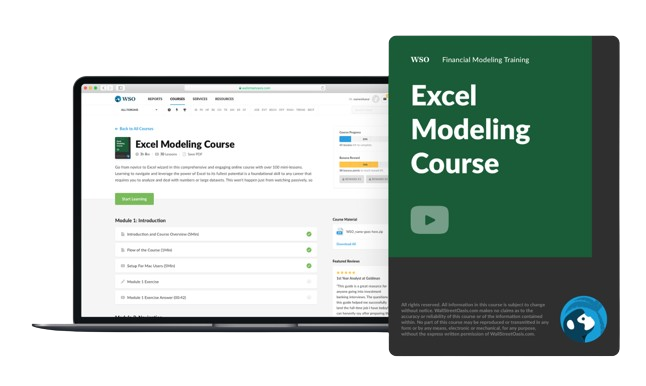

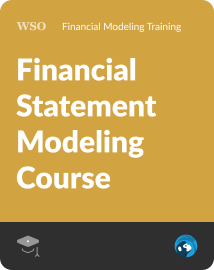
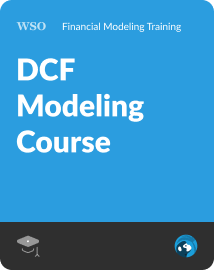
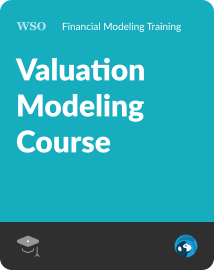

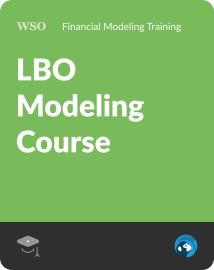

or Want to Sign up with your social account?